
Apparent diameter comparison of Saturn, Jupiter, and Neptune r/spaceporn
However, thanks to science, we've been able to discover that the surface area of Neptune is 2.9 billion square miles (7.6 billion square kilometers). Neptune Diameter. Neptune is around four times wider than Earth. If you're having trouble visualizing just how big that is, think of a nickel (Earth) next to a baseball (Neptune) in terms of.
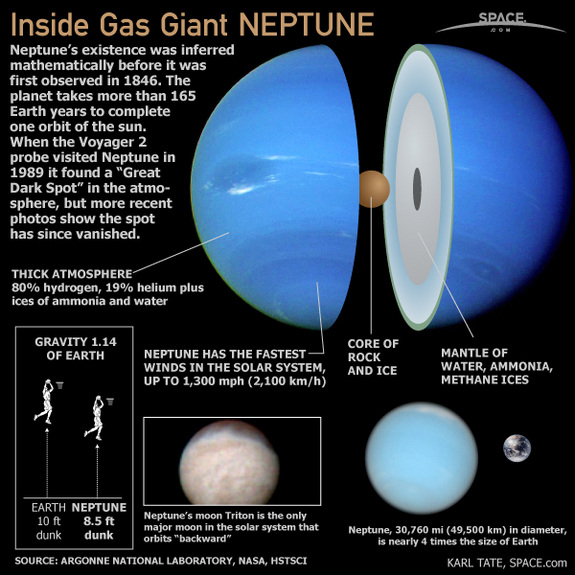
Fun Facts About Neptune Science News
Neptune is the eighth and farthest planet from the Sun. It is the fourth-largest planet in the Solar System by diameter, the third-most-massive planet, and the densest giant planet. It is 17 times the mass of Earth, and slightly more massive than its near-twin Uranus.

PPT Our and Solar System PowerPoint Presentation, free download ID4102498
Neptune Earth (Neptune/Earth) Equatorial radius (1 bar level) (km) Polar radius (1 bar level) (km) Volumetric mean radius (km) Ellipticity (Flattening) Mean density (kg/m Gravity (mean, 1 bar) (m/s Acceleration (eq., 1 bar) (m/s Acceleration (pole, 1 bar) (m/s Escape velocity (km/s) V-band magnitude V (1,0) Solar irradiance (W/m
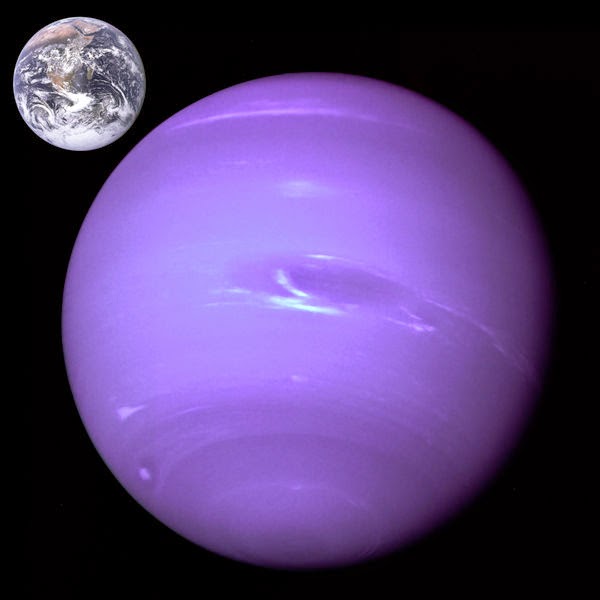
SciHi Blog
Orbiting the sun at a distance of 2.8 billion miles (4.5 billion kilometers), Neptune is the fourth-largest planet by diameter and third-largest by mass, having a diameter of 30,598 miles (49,244 kilometers).

Meet Hippocamp! Neptune's Smallest Moon Has a Name (and a Violent Past) Space
Neptune. NEPTUNE. Actual Diameter - 49,500 km. Scaled Diameter - 0.026 cm. Actual Distance - 4,497,000,000 km. Sun Mercury Venus Earth Mars Jupiter Saturn Uranus Neptune Pluto. Neptune Fact Sheet. Planetary Fact Table. Back to the Schoolyard Solar System home page.

Physicists of the Caribbean July 2013
Neptune isn't last. Pluto has a diameter of 1,473 miles (2,370 kilometers) across, as determined by New Horizons in July 2015. It is estimated to be 70 percent rock and 30 percent ice.

Neptune 8th from sun, most distant, last in main system, structure
The diameter of Neptune is approximately 49,500 km. This makes Neptune the 4th largest planet in the Solar System, after Jupiter, Saturn and Uranus. I say approximately because the diameter of.

The Neptune Rotation, revolution, distance, composition, rings, satellites
The Great Dark Spot (centre left) is 13,000 km (8,100 miles)—about the diameter of Earth—in its longer dimension. Accompanying it are bright, wispy clouds thought to comprise methane ice crystals. At higher southern latitudes lies a smaller, eye-shaped dark spot with a light core (bottom left). Just above that spot is a bright cloud dubbed Scooter.
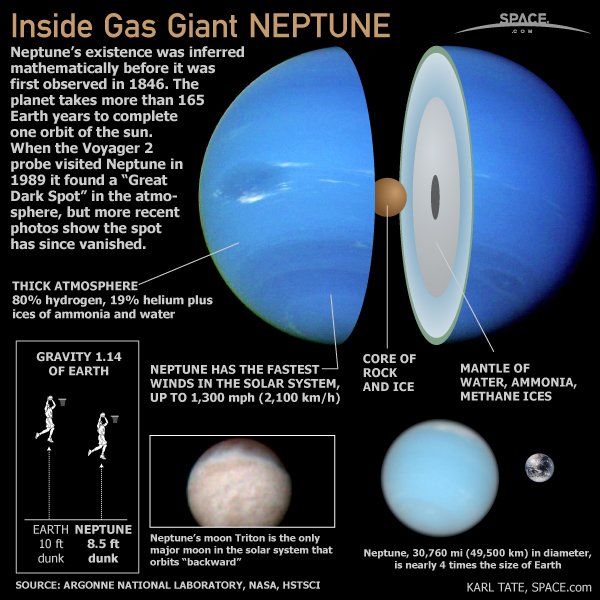
Facts About Neptune's Orbit, Moons, & Rings. — Steemit
Neptune is the 4th largest planet in the Solar System, after Jupiter, Saturn, and Uranus. It's much larger than the terrestrial planets: Mercury, Venus, Earth and Mars. The diameter of Neptune.

Diameter of Neptune Universe Today
Size: Neptune is slightly smaller than Uranus and has a diameter of 31,000 miles (50,000 kilometers), so about 4 Earths would fit across its face. Distance from the Sun: Neptune is the eighth.

Neptune and Earth Neptune, Neptune Earth
Of the four giant planets, Neptune is the smallest. Its diameter is roughly 30, 755 miles. This is the measurement taken from a point in the atmosphere where the pressure does not exceed 1 bar. Neptune is four times bigger than earth but is just slightly smaller than Uranus. Despite being smaller than Uranus, Neptune's mass exceeds it by 1.2.

Neptune
Neptune's equatorial diameter measured at the one-bar pressure level (the pressure of Earth's atmosphere at sea level) is 49,528 km (30,775 miles), which is only about 3 percent shy of the diameter of Uranus.
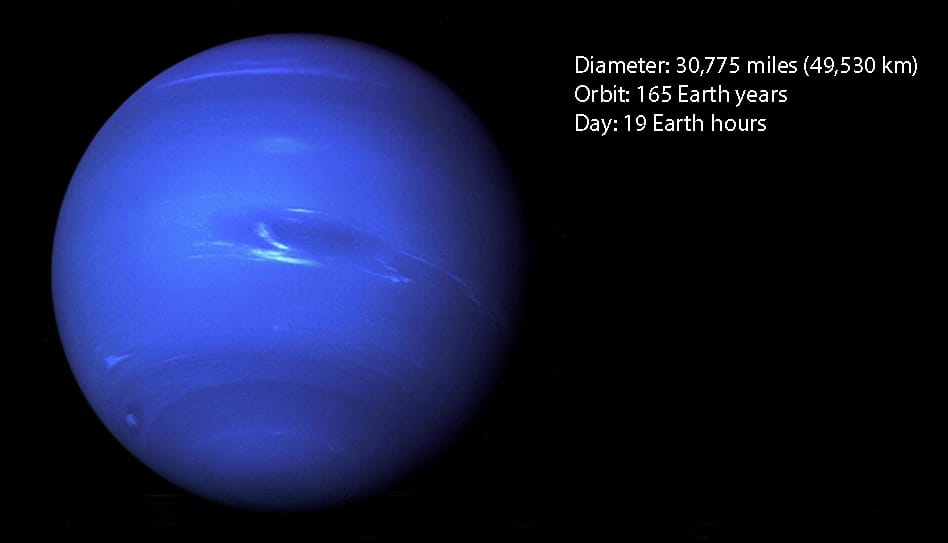
11 The in Our Solar System Smrt English
How big is Neptune? Neptune is the fourth largest planet in our Solar System and it is the smallest of the giant gas planets. Neptune has a diameter of 34,503 miles (55,528) kilometers. Its volume is 57.7 times the volume of Earth which means that 57 Earths could fit inside of Neptune with a little room left over. Continue the conversation on

Neptune by kim yunyeoung
Orbiting at a distance of roughly 2.8 billion miles from the sun, Neptune is the furthest planet yet discovered in our solar system (that is, after Pluto's reclassification as a dwarf planet in.
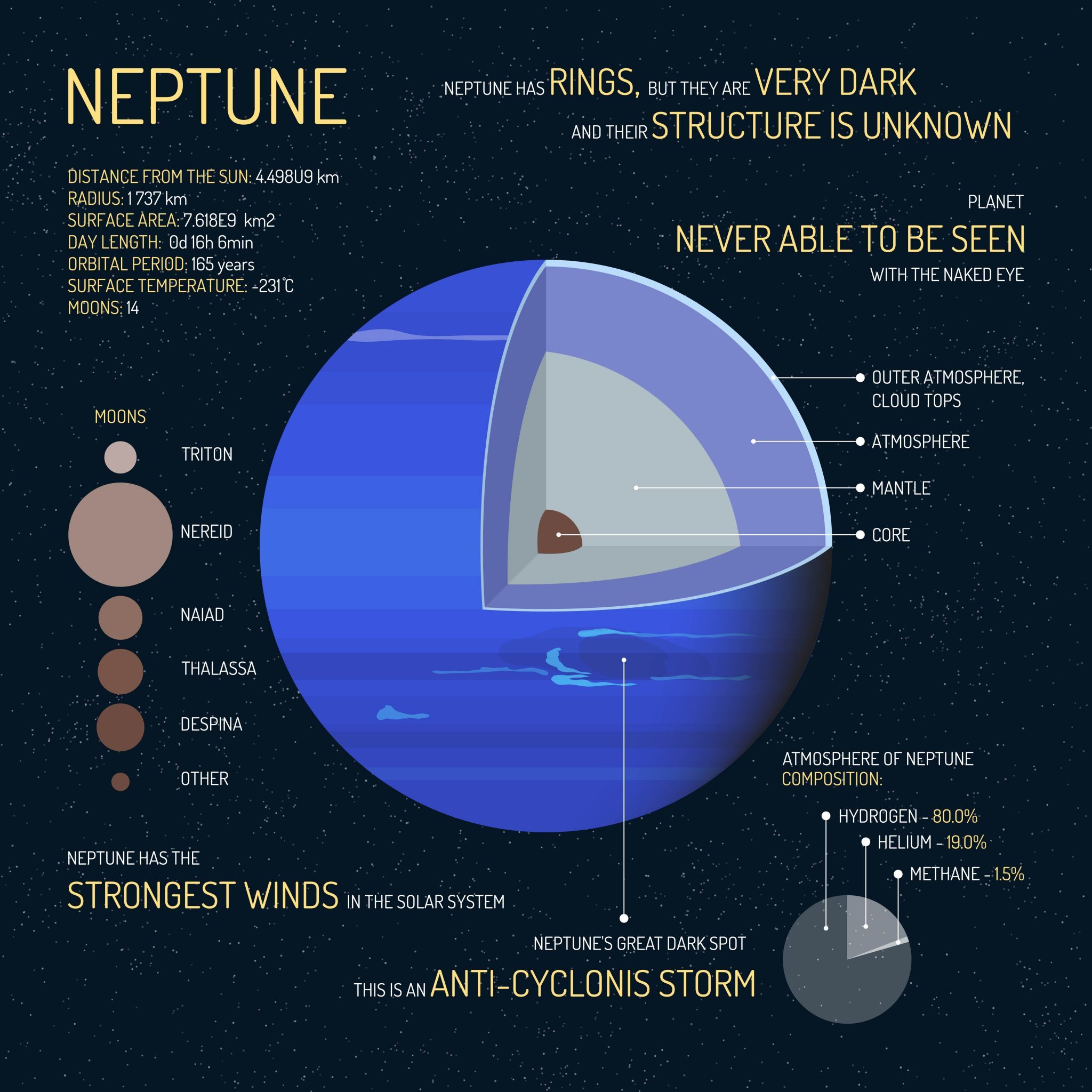
Neptune Facts The Big Blue [Infographic] Earth How
The average diameter across the planet is 30,598 miles (49,244 km), almost four times the diameter of Earth. A trip around Neptune's equator would cover 96,129 miles (154,705 km). Such a trip.

Neptune by N Murphy
Neptune's elliptical, oval-shaped orbit keeps the planet an average distance from the sun of almost 2.8 billion miles (4.5 billion kilometers), or roughly 30 times as far away as Earth, making it.